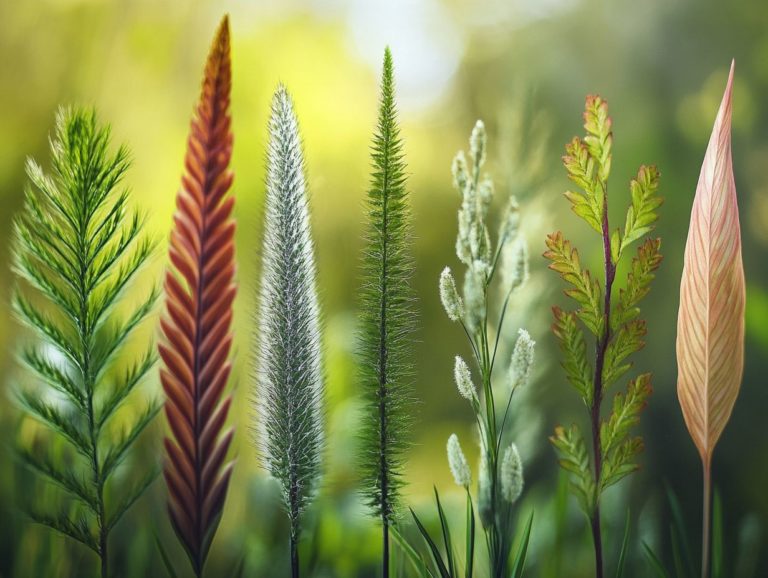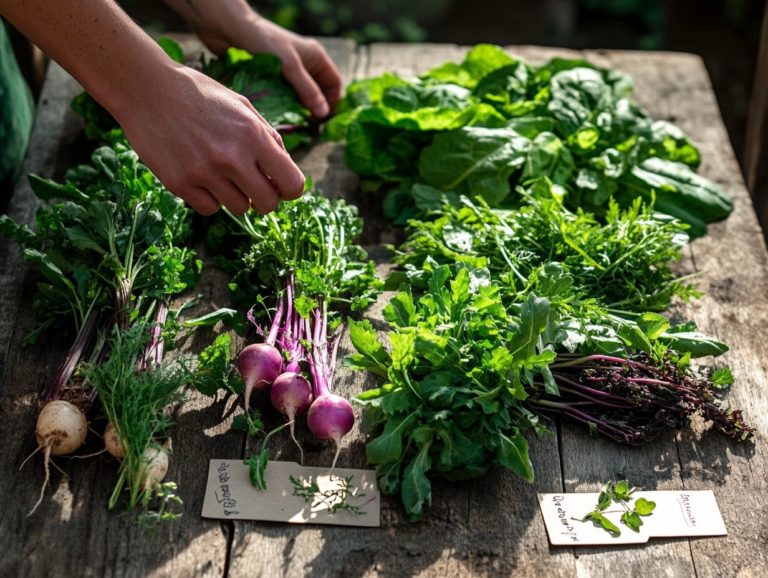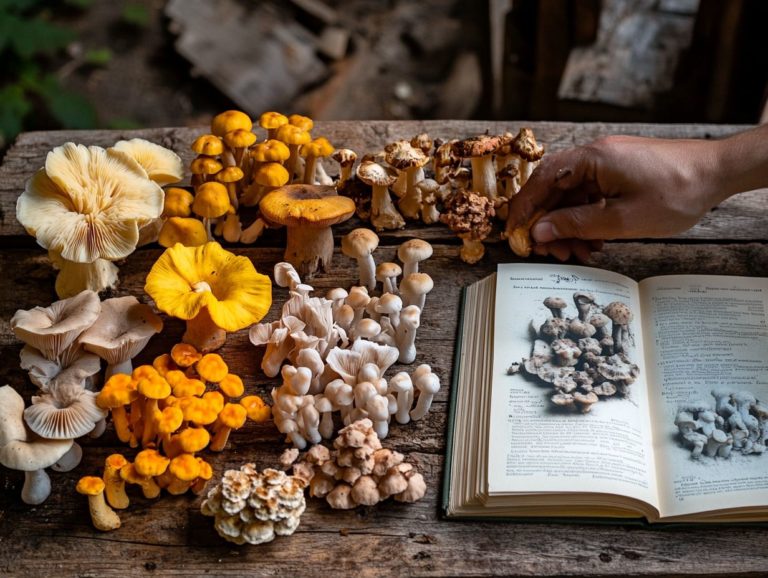How to Identify Plants Using the Internet
Identifying plants has never been more accessible, thanks to the abundance of online tools and resources at your fingertips. Whether you re a gardening aficionado, an aspiring botanist, or simply intrigued by the greenery surrounding you, mastering the use of apps and websites can significantly enhance your knowledge and appreciation of plant life.
This article delves into popular platforms for plant identification, highlights key characteristics to observe, provides tips for snapping the perfect plant photo, and offers additional resources to expand your botanical expertise.
Join us in discovering the exciting world of plant identification online!
Contents
- Key Takeaways:
- Online Tools for Plant Identification
- Using Plant Characteristics for Identification
- Tips for Taking and Uploading Photos
- Resources for Plant Identification
- Frequently Asked Questions
- What is the benefit of using the internet to identify plants?
- What are the steps to identifying a plant using the internet?
- Can I identify any plant using the internet?
- What features should a good plant identification tool have?
- What common mistakes should I avoid?
- Can I use the internet to identify plants anywhere?
Key Takeaways:

Why it is Important and Useful
Identifying plants is crucial for outdoor lovers. With smartphone technology advancing at a rapid pace and specialized apps becoming widely available, identifying plants has transformed into a more accessible and precise endeavor.
These innovations enable you to elevate your outdoor experiences and seize educational opportunities that deepen your appreciation for nature. For hikers, knowing which plants are safe to touch or consume enhances safety in the wilderness, helping to avert the dangers posed by toxic species.
Communities are essential for sharing knowledge, providing a support system where people can share experiences and help each other with plant identification. Local groups and online forums help collaboration in plant identification, ensuring accuracy while creating a supportive atmosphere for learners. Technology has paved the way for interactive platforms where you can upload photos and receive real-time identification assistance, making it simpler than ever to enrich your understanding of local biodiversity and the risks associated with poisonous plants.
Online Tools for Plant Identification
In today s digital landscape, you have access to many online tools and apps designed to simplify plant identification, allowing you to immerse yourself in the flora that surrounds you.
These sophisticated resources harness shared collections of information and advanced features, enabling you to swiftly tap into a wealth of information about plants at your fingertips.
Start your plant identification adventure today and unlock the wonders of nature!
Overview of Popular Apps and Websites
Popular apps and websites excel in plant identification. They offer features that significantly enhance your experience.
Apps like PlantNet and FlowerChecker stand out with their easy-to-use designs and extensive databases, enabling you to identify a wide range of species quickly and efficiently. They have extensive catalogs that deliver impressive accuracy, making them reliable companions whether you re a novice or a seasoned botanist.
For instance, PlantNet fosters community engagement by allowing you to contribute your observations and receive support from the PlantNets Plant & Pest Diagnostics team, enriching its database while cultivating a sense of camaraderie among fellow plant enthusiasts.
Likewise, FlowerChecker provides professional support. Simply send pictures to real botanists for confirmation, ensuring that your identifications are spot on. The setup for both apps is refreshingly simple; they require minimal input and are easily accessible on mobile devices, allowing for seamless identification on the go.
Test results show these apps shine in trials, proving they’re must-haves for plant lovers! This further solidifies their standing as essential tools for anyone passionate about flora.
Using Plant Characteristics for Identification

Understanding plant characteristics is crucial for accurate identification. Features such as leaf shape, flower color, and stem structure serve as key indicators that can help you differentiate between species.
With a solid grasp of botany, you can recognize these traits and forge a deeper connection with the plants in your surroundings.
Leaf, Flower, and Stem Features
Leaf, flower, and stem features are essential in your plant identification journey. Each offers unique insights into a species’ identity. For instance, the shape of a leaf can hint at whether you’re dealing with a flowering species or a shrub, while the arrangement of petals can uncover vital details about its lineage.
Take the arrangement of leaves, known as phyllotaxy (the way leaves are arranged on a stem); this can help you distinguish between species for example, whether they have alternate or whorled leaves. The color and texture of both flowers and leaves are equally important; bright colors might lure in pollinators, as you can see with the striking blooms of hibiscus, while waxy leaves in succulents serve to retain moisture.
Stems also exhibit significant variation. A sturdy woody stem often indicates a tree species like oak, whereas a soft, green stem typically points to herbs such as basil. Together, these characteristics create a complex code that allows you to navigate the diverse and fascinating world of botany.
Tips for Taking and Uploading Photos
Taking and uploading high-quality photos is essential for accurate plant identification. The clarity and detail of your images significantly increase the likelihood of correct identification.
By following specific tips, you can enhance the user experience and boost the accuracy of the results when utilizing plant identification tools.
Best Practices for Accurate Identification
To achieve accurate identification, you should adhere to best practices. These enhance your ability to distinguish between species and effectively utilize the available tools. Engaging with community support can significantly enrich this process; sharing your experiences often leads to a deeper understanding of plant features.
When capturing photos, employing multiple angles allows you to gain a comprehensive view of the subject, revealing unique characteristics that might easily be overlooked. Verifying information through community input can also provide invaluable insights, enhancing your identification process.
It’s crucial to make the most of identification tools by familiarizing yourself with their features and understanding how to effectively use them, following detailed instructions for best results, streamlining your search for accurate data. Participating in community forums can foster enriching discussions that deepen your knowledge and expose you to diverse perspectives, ultimately boosting your confidence in identifying various species.
Dive into the world of plant identification now and unlock the secrets of nature around you!
Resources for Plant Identification

Discover a treasure trove of resources for plant identification! You ll find free botanical field guides and lively online forums.
Dive into these materials to sharpen your identification skills and boost your plant knowledge.
Books, Forums, and Other Sources
Books and forums are fantastic sources for your plant identification journey. They offer insights that complement your digital tools.
Notable books like “The Plant Lover’s Guide” series feature stunning photos and detailed descriptions to help you identify plants accurately.
Platforms such as “iNaturalist” foster vibrant community interactions. Engage with experienced botanists and fellow enthusiasts to share tips and personal stories.
Frequently Asked Questions
What is the benefit of using the internet to identify plants?
The internet provides access to a wealth of information and resources. You can find databases from organizations like the U.S. FDA and the ASPCA.
These resources make it easier to identify plants accurately and offer visual aids for assistance.
What are the steps to identifying a plant using the internet?

Start by taking clear photos of the plant, including the leaves, stem, and flower. Ensure they are high quality for better identification.
Next, use a reliable identification website or app to compare your photos with their database. Confirm your ID by cross-checking multiple sources.
Can I identify any plant using the internet?
The internet is a great resource, but some plants may be hard to identify without a sample or expert help. To enhance your skills, learn how to use a plant key for identification and consult a professional if you’re unsure.
What features should a good plant identification tool have?
A good tool should offer a large plant database, clear photos, user-friendly search options, and accurate plant information. Community support is also beneficial.
What common mistakes should I avoid?
Don t rely on just one source for identification. Cross-checking with multiple sources ensures accuracy.
Be cautious of misidentifications; some plants look similar.
Can I use the internet to identify plants anywhere?
Yes, you can identify plants from anywhere with internet access and a reliable tool by following guidelines on how to use online resources for plant ID. Remember to consider the plant’s native range and possible invasiveness.






